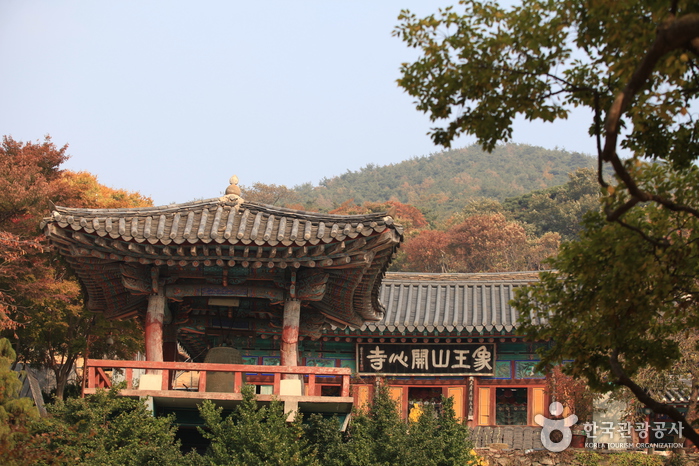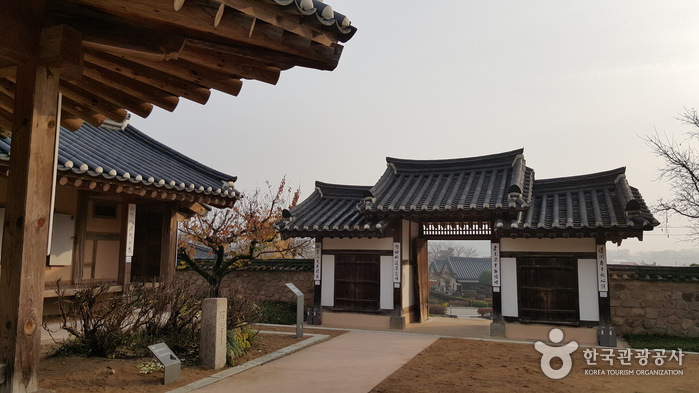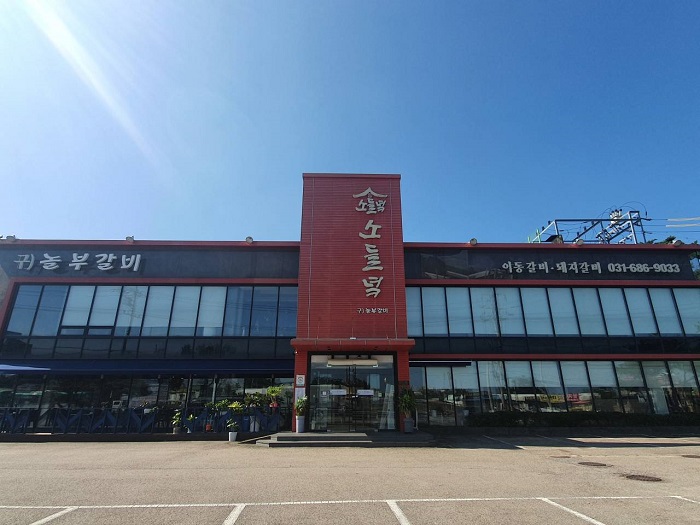Seosan Gaesimsa Temple (개심사(서산))
19.0 Km 49163 2021-09-18
321-86, Gaesimsa-ro, Seosan-si, Chungcheongnam-do
+82-41-688-2256
Situated in a dense forest in Sangwangsan Mountain and 6 kilometers away from Haemi-myeon, Gaesimsa Temple is one of the four major temples in Chungcheongnam-do. The path from the parking lot to the temple site is quite remote and curved, but beautiful especially in spring when cherry blossoms are in full bloom.
The temple was built in 1484 during the 15th year of King Seongjong and designated as a Treasure. The architecture of the temple stands out, as the buildings use bent tree trunks for pillars.
House of Chusa (추사고택)
19.0 Km 14765 2022-12-28
261, Chusagotaek-ro, Yesan-gun, Chungcheongnam-do
+82-41-339-8248
House of Chusa, Chusa Gotaek in Korean, is the traditional Korean house of the renowned scholar and calligrapher Chusa, also known as Kim Jeong-hui. This old house is known to have been constructed by the great-grandfather of Chusa, Kim Han-Sin.
The Korean-style house compound (266.11 m²) consists of munganchae (a guesthouse), soseuldaemun (a high gate), sarangchae (ㄱ-shaped men's quarters), anchae (ㅁ-shaped women’s quarters) and a shrine where the remains of Chusa are enshrined. Theㄱ-shaped Sarangchae stretches for one kan (traditional measuring unit) to the south and 2 kans to the east and is comprised of two rooms and a daecheongmaru (living area). The Anchae consists of a six-kan daecheongmaru and two one-kan rooms.
Located on the ground is a tomb where Chusa’s great-grandfather (Kim Han-Sin) and his wife (Hwasun Princess) are buried. Nearby, visitors will see a gate that was constructed to commemorate Princess Hwasun’s faithfulness to her husband.
Located approximately 600 meters to the north of the old house is a lacebark pine tree, which was designated as a Natural Monument. The lacebark pine tree, originally from northern China, is among the few of its kind in Korea. It is said that Chusa snuck the pine across the border from China (formerly, the Qing dynasty) into the country when he was 25 years old and planted it at the tomb of his great-grandfather. Originally, the tree had three branches, but two were broken and the third branch was damaged. In 1980, the damaged branch was treated and since then, the tree has been kept under strong protection.
NOLBOO GARDEN (놀부갈비)
19.1 Km 7411 2021-03-23
7, Poseunghyangnam-ro, Pyeongtaek-si, Gyeonggi-do
+82-31-686-9033
It is a place where you can taste Korean BBQ. This restaurant's signature menu is rib eye roll. This Korean dishes restaurant is located in Pyeongtaek-si, Gyeonggi-do.
Asanman Embankment (아산만방조제)
19.3 Km 0 2024-02-22
759, Gongse-ri, Inju-myeon, Asan-si, Chungcheongnam-do
Asanman Embankment was created by blocking the stream that flows into the Asanman Bay in the West Sea. Although it was originally created to expand the farmlands of the region, Asanman Embankment became a tourist site over time thanks to its beautiful scenery. The area has the Yellow Sea to the west and Asanho Lake to the east. The western side of the embankment has a wide tidal flat. Fishing and drives can be enjoyed in the area. Don’t miss the view of the sunset toward the sea. In addition, there is a park, observatory, and exhibition hall in the area.
Gongseri Catholic Church (아산 공세리성당)
19.5 Km 16733 2021-10-22
10, Gongseriseongdang-gil, Asan-si, Chungcheongnam-do
+82-41-533-8181
Gongseri Catholic Church was founded in 1894 as the main parish of the Daejeon diocese in Gongse-ri, Inju-myeon that connects Asanman Bay to Sapgyocheon Stream. Early missionaries originally used a common house for church meetings in the early years until in 1897 when a rectory was built, followed by the establishment of the main church in 1922. This was the first Catholic church in Chungcheongnam-do and the religion spread across Anseong, Onyang, and Dunpo to establish regional churches respectively. The grounds have three graves of prosecuted martyrs, a parish and rectory, retreat house, and meeting room. The premises is surrounded by beautiful views of a lush forest.
Yesan Hwaamsa Temple (화암사 (예산)
19.9 Km 7473 2020-04-04
21-29, Yonggung 1-gil, Yesan-gun, Chungcheongnam-do
+82-41-332-9250
Hwaamsa Temple is located near Joseon dynasty's scholar and writer Kim Jeong-hui's, also referred to his pen name Chusa, house. The temple has ties with the ancient writer, as the temple is known to have been repaired and renovated by Kim Jeong-hui's great grandfather. There are no records that explains the foundation of Hwaamsa Temple, and only a timeline of its reconstruction can be found in "Records of Hwaamsa Temple Restoration" plaque, which is displayed in Sudeoksa Temple Museum. The timeline was recorded by Kim Myeong-hee in 1848, and written by Kim Seong-hee, and carved by Cho Seok-shin. The name "Hwaamsa" was given by King Yeongjo (r. 1724-1776).




 English
English
 한국어
한국어 日本語
日本語 中文(简体)
中文(简体) Deutsch
Deutsch Français
Français Español
Español Русский
Русский